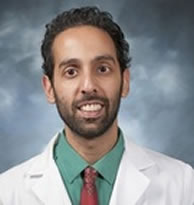Background
Acute compartment syndrome (CS) is a true orthopedic emergency. It is a painful condition that occurs when pressure within the muscles builds to dangerous levels. It is often - but not always - the result of a traumatic injury. Management involves a fasciotomy in which the surrounding skin and fascia are cut open to relieve the pressure. Delay or missed diagnosis can have very serious consequences.
Causes
Compartment syndrome is classically associated with long bone fractures. However, there are many other conditions that can predispose patients to developing CS: crush injuries, even in the absence of a fracture, may lead to elevated pressures. Soft tissue infections, hematomas, tight-fitting casts, DVT, and circumferential burns are just some of the other causes.
Diagnosis
The most common presentation involves pain and swelling in an extremity. Healthcare providers should be very suspicious when the patient is in pain that seems out of proportion to the injury, and when there is pain with gentle, passive stretching of the toes or fingers. Physicians are taught the "6 Ps" of CS: Pain, Pallor, Pulselessness, Paresthesias, Poikilothermia, and Paralysis. While these are the classic symptoms/signs, be aware of the fact that some may be very late manifestations. To put it another way: by the time a patient has developed paralysis or lost a pulse, it is likely that significant damage to the underlying tissues has already occurred. Whenever CS is suspected, confirmatory testing should be performed by checking intra-compartmental pressures. Pressures greater than 30 mmHg are considered abnormal and warrant orthopedic evaluation. If there is high clinical suspicion, consider repeating a pressure check after a brief period of observation.
Treatment
Once compartment syndrome has been diagnosed, urgent fasciotomy is indicated. Fasciotomy within 6 hours of symptom onset usually results in complete recovery. Delaying fasciotomy significantly increases the likelihood of permanent muscle and nerve damage.
Pitfalls
Compartment syndrome is a rare condition, but one that every emergency medicine provider should be diligent in considering. Failing to include it in the differential diagnosis is a significant medicolegal risk. Do not rely too heavily on the ''6 P's". Pain and swelling are the most common initial findings and are enough to warrant consideration of compartment syndrome. Perform and document a thorough physical exam making sure to include sensory, motor, and vascular findings. Do not hesitate to consult an orthopedic surgeon: even in patients with an initial normal compartmental pressure, if clinical suspicion is high, observe the patient and recheck the pressure.
Dr. Sajid Khan, MD, is a board-certified Emergency Medicine physician with over 10 years of experience working in a variety of settings from inner-city level 1 trauma centers serving 100,000 patients per year to 3-bed rural Eds. A published author, Dr. Khan has written a number of books including, The Ultimate Emergency Medicine Guide, a comprehensive review book that is the highest-rated and most up-to-date text for Emergency Medicine physicians preparing to certify.
©Copyright - All Rights Reserved
DO NOT REPRODUCE WITHOUT WRITTEN PERMISSION BY AUTHOR.









